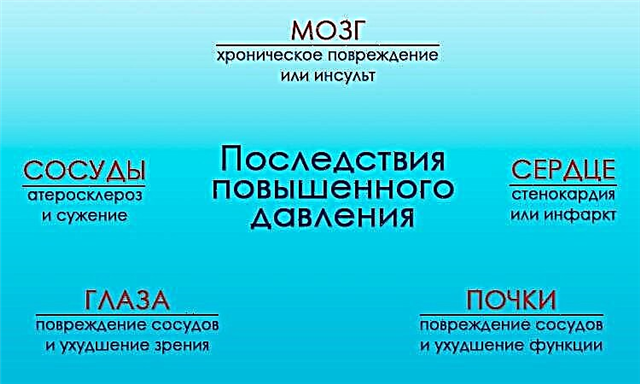Rhinitis, or, more simply, a runny nose is one of the most common diseases that people of any age are susceptible to. Children especially often suffer from a cold. At the same time, a child who already knows how to talk may himself complain that he is sick, but with children under one year old who can neither blow their nose nor explain what exactly bothers them, things are much more complicated. How to understand that a baby has a runny nose? This article is devoted to this issue.
A runny nose is associated with a variety of diseases that affect the nasal cavity. Most often it appears with viral infections (ARVI), allergic rhinitis, bacterial lesions of the nasopharyngeal mucosa.
Manifestations of a physiological rhinitis
 First of all, it should be noted that a runny nose in an infant is not always a symptom of the disease. Excessive mucus formation can be a symptom of a so-called physiological rhinitis. This "runny nose" often occurs in children under three months of age.
First of all, it should be noted that a runny nose in an infant is not always a symptom of the disease. Excessive mucus formation can be a symptom of a so-called physiological rhinitis. This "runny nose" often occurs in children under three months of age.
Physiological rhinitis is the formation of excessive sputum by the mucous membrane of the nasal cavity. The cause of this condition is the immaturity of the tissues that produce sputum.
In newborns, the mucous membrane of the nasopharynx is too dry, since its secretory cells practically do not function (under the conditions of the mother's body, this was not necessary - the nasopharynx was constantly moistened with amniotic fluid). Within 2-3 months, the infant's respiratory system adapts to air conditions. During this period, the mucous membrane can become excessively moisturized, up to the appearance of transparent liquid snot. In this case, the baby is not particularly worried about these secretions.
Physiological rhinitis is not accompanied by fever, impaired appetite and child activity.
Symptoms of viral rhinitis
Infants can get viral rhinitis, which is often referred to as the common cold. ARVI viruses are spread by airborne droplets; they enter the body of an infant through contact with a sick person or a carrier of the infection. The body of a child in the first year of life has not encountered most viruses, and therefore his immune system does not yet have mechanisms that provide resistance. As a result, the baby becomes infected very easily, and suffers the disease much harder than the adult.
A viral rhinitis in infants has the following symptoms:
- the appearance of snot - in the first 1-2 days of the disease, they are liquid and transparent, in the following days they become more viscous and turn white;
- an increase in body temperature (in infants with ARVI, the temperature can exceed 38C);
- redness of the throat, nasal mucosa, eyes;
- sneezing;
- refusal to feed (the baby picks up the breast, but then drops it, since he cannot breathe through his nose);
- sleep disturbance (also as a result of nasal congestion);
- the baby becomes moody and inactive.
Treatment for viral rhinitis in infants is usually limited to topical therapy. It is often necessary to instill the nose with isotonic solutions (drops based on seawater, saline) - this promotes the liquefaction and outflow of mucus from the nasal passages. The use of vasoconstrictor drops is not recommended.
If the runny nose is severe and the baby's nose is literally clogged, the nasal passages should be cleaned of mucus using a special aspirator or a small rubber bulb. Be careful not to insert the aspirator / bulb tip deep into your nose.
How does bacterial rhinitis manifest?
Rhinitis caused by bacteria is very rare in children, contrary to popular belief. Moreover, bacterial rhinitis is a very dangerous condition; it can provoke various complications (for example, otitis media, sinusitis), as well as, with inept treatment, go into a chronic form. In addition, this disease itself is difficult for children.
In infants with bacterial rhinitis, the following symptoms are observed:
- discharge of thick yellow-green snot;
- nasal congestion;
- high body temperature (above 38C);
- the absence of parallel symptoms - sneezing, redness of the throat, cough, etc.;
- feeling unwell (refusal to feed, poor sleep, frequent crying).
The diagnosis of "bacterial rhinitis" can only be made by a doctor, and only after bacteriological examination of a smear from the nasal cavity of a sick child.
If pathogenic bacterial microflora is detected, antibiotics may be prescribed to the child. However, in some cases, treatment is limited to the use of local antiseptic drugs, as well as drops that thin the mucus. The need for antibiotics is determined by the patient's condition, the type of infectious agent, the intensity of inflammation and other factors.
Manifestations of allergic rhinitis
Allergic rhinitis is a disease associated with the body's hypersensitivity to allergens that enter the respiratory tract with the air. Dust, animal hair, household chemicals, pollen, etc. can act as an allergen.
Allergic rhinitis is often diagnosed in infancy. The manifestations of an allergic rhinitis in infants are as follows:
- frequent sneezing after inhaling potentially allergenic air;
- lacrimation, redness of the eyes;
- discharge from the nose of a large amount of clear liquid mucus;
- swelling of the nasal mucosa, and as a result - congestion.
The listed symptoms can be observed simultaneously or separately.
The general condition with allergic rhinitis is not disturbed - the temperature is not elevated, appetite and sleep are normal. In the absence of allergens in the environment, a child with allergic rhinitis appears to be completely healthy.
If you suspect allergic rhinitis in an infant, you should consult a pediatrician or allergist. Treatment of allergic rhinitis is a complex and lengthy process, and the selection of drugs is always individual. To date, there are anti-allergy drugs developed specifically for infants (among them are both general-action drugs and topical ones - nasal drops). In addition to periodically taking medications, allergy sufferers are forced to constantly avoid contact with the allergen.
Conclusions
Signs of a runny nose in infants suffering from various types of rhinitis are largely similar: they include hypersecretion of nasal mucus, impaired nasal breathing, and refusal to feed. At the same time, infectious rhinitis (viral and bacterial), in contrast to allergic, is always accompanied by a violation of the health of the sick child; this is primarily due to intoxication.
Intoxication is the poisoning of the body as a result of the entry into the blood of substances formed during the life of pathogens. It can manifest as headache, fever, stomach or intestinal upset. Intoxication is observed with bacterial and some viral infections (for example, with flu).
Knowledge of the characteristic symptoms of various types of rhinitis in infants will help parents identify a particular disease in a child; however, parents themselves should not give any medication to the baby until the pediatrician confirms (or refutes) the alleged diagnosis.



